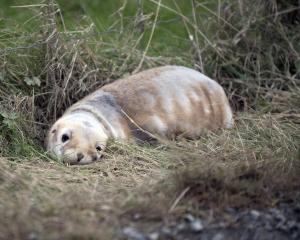
About 350 delegates from across New Zealand and Australia are in the city for the three-day Institute of Public Works Engineering Australasia conference, being held at the Dunedin Centre, which concludes today.
The conference was opened on Thursday by Steven Joyce, the Minister of Finance and Infrastructure, and yesterday attention turned to some of the city’s major engineering feats.
That included maintaining the tenuous connection between the city and Otago Peninsula, the epicentre of the city’s wildlife tourism industry, which was worth an estimated $100million a year to Dunedin’s economy.

The peninsula’s original century-old sea wall "has had it" in many places, and the safety of motorists was threatened by bad weather and narrow winding roads that offered no margin for error, council transport projects team leader Gareth Evans told a seminar.
The council’s response included slip repairs like "two car slip" on Highcliff Rd, and the $2.8million Turnbulls Bay slip repair, which had threatened to "cut off" Portobello Rd in its entirety, he said.
But it also included the road-widening, shared pathway and safety improvements project gradually stretching out from the city to Taiaroa Head, he said.
The plan was among the largest infrastructure projects undertaken by the city, but there were murmurs from sections of the audience as Mr Evans detailed the project’s cost blow-out, from $20million to $49million.
The higher cost, first revealed last month, was "not ideal", but the New Zealand Transport Agency would pick up 55% of the bill, he said.
And, once completed, the peninsula would have a safer route, a 25km-long hand-stacked seawall — one of the southern hemisphere’s longest — new pullover bays, crossings and beach access points, and a road lifted by 1m or more to accommodate sea level rise. An average of about 6m of harbour would be reclaimed, making room for roading improvements and the new shared pathway for pedestrians and cyclists, he said.
The peninsula project was one of five highlighted yesterday, as delegates later split into groups to tour the city’s infrastructure and engineering hotspots from the Dunedin Gasworks Museum to the University of Otago and Taieri Plains flood protection scheme.












